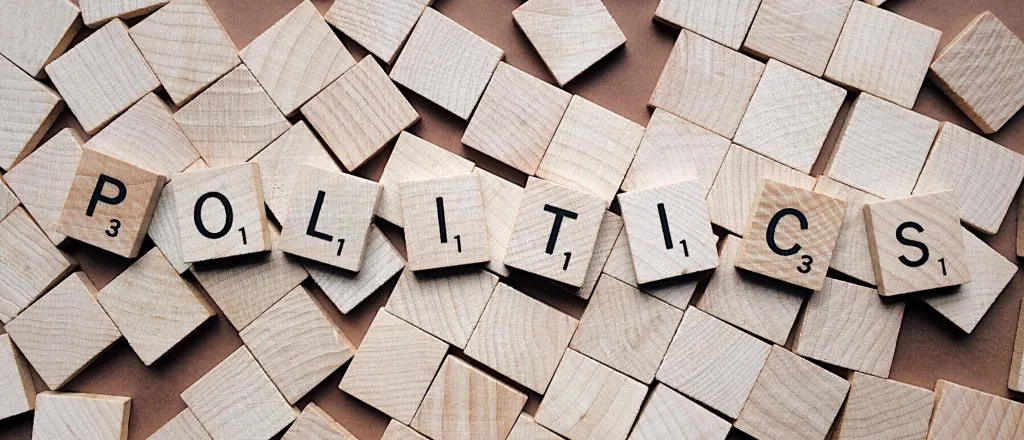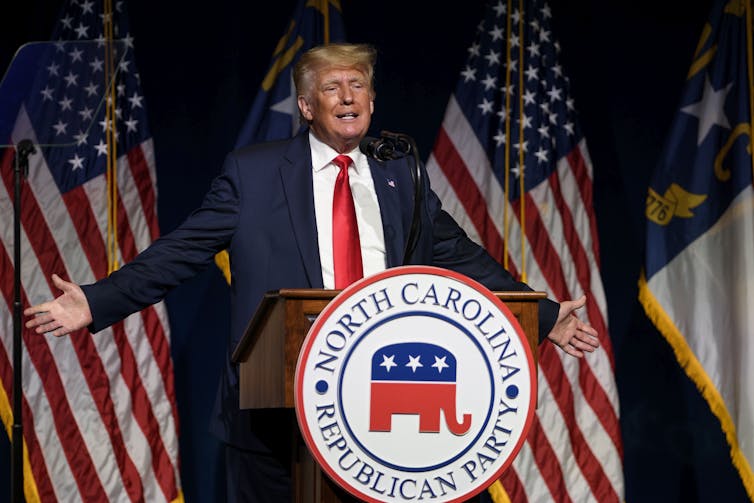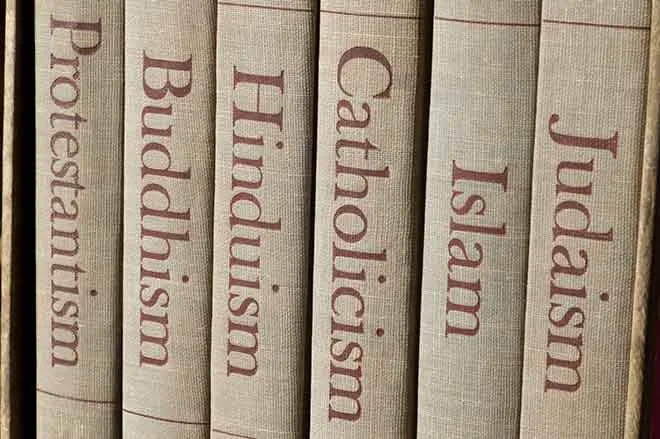
What today’s GOP demonstrates about the dangers of partisan conformity

Robert B. Talisse, Vanderbilt University
Directly following the 2020 election, Republicans seemed to be through with Donald Trump. Party leaders stopped speaking to him and voters began abandoning the GOP, apparently in reaction to Trump’s role in the Jan. 6 Capitol riot.
Recently, things have changed. Republicans are once again aligning with Trump, even to the point of alienating GOP members who criticize Trump for lying about the election.
The party’s reuniting with Trump may seem puzzling. A one-term and twice-impeached president with a consistently low approval rating ordinarily would be a liability. Yet the GOP’s return to Trump is not really a surprise, because of the psychological forces known as belief polarization and the black sheep effect.
Though these forces explain why the GOP is sticking with Trump, they also spell trouble.
To be politically successful, coalitions need to be unified. But unity can go only so far. As pressures to unify mount among group members, groups tend to factionalize, splinter and shrink.
And as a coalition shrinks, it becomes less effective in the political arena. This dynamic teaches an important lesson about democracy: To avoid splintering, partisans need to take steps to welcome dissent within their groups.

From unity to extremism
Belief polarization is a strikingly common phenomenon. When people interact only with like-minded others, they transform into more extreme versions of themselves: They come to adopt more radical versions of their beliefs and grow more confident of the truth of those beliefs.
In shifting toward more extreme beliefs, people also come to see those with whom they disagree as irrational, corrupt and depraved.
Yet, as I document in my forthcoming book, “Sustaining Democracy,” our more extreme selves are also more conformist. Belief polarization leads group members to become both more extreme and more alike. As members grow more uniform, they also become increasingly resolute in enforcing conformity. Thus, the group becomes less tolerant of dissension within its ranks and more prone to expel deviating members.
As pressure to conform intensifies, the group also comes to define itself more strictly in terms of its animosity toward other groups.
Eventually group membership expands into an entire lifestyle set in opposition to rivals. Belief-polarized groups thus insulate themselves from contact with outsiders.
This goes a long way toward explaining the divide between “red” and “blue” states. Even within diverse American cities there tend to be distinct “liberal” and “conservative” districts.
With this insularity comes increasing reliance on central leaders to establish the standards for authentic group membership. This makes the group internally hierarchical and increasingly fixated on consensus and purity. Belief-polarized groups are also highly susceptible to the black sheep effect, the tendency to dislike lapsed or deviant members of one’s own group more intensely than one dislikes members of rival groups.
Thus, as belief polarization takes effect, true believers seek to punish and purge anyone appearing to be halfhearted, inauthentic or disloyal. The result is that belief-polarized groups tend to splinter and expel members until only the most extreme and devoted remain.
GOP polarization
From my perspective as a political philosopher, I believe this is where the GOP finds itself.
Belief polarization has become well entrenched within the party after at least four years of defining itself as pro-Trump and in opposition to the Democratic Party, leaving it in need of central leadership that can corral the membership and set the agenda.
This partly explains why Rep. Liz Cheney was removed from her leadership position in the GOP despite her being more conservative than the average Republican House member and having a record of reliably voting for Trump’s legislative agenda.
To the GOP rank and file, Cheney’s relentless criticism of Trump shows a lack of fidelity to the Republican Party.
Belief polarization also makes sense of why Rep. Elise Stefanik was chosen as Cheney’s successor in the House GOP leadership. Although Stefanik is less conservative than Cheney, she is a Trump loyalist who, in accepting her new leadership role, pledged to forge “unity” within the GOP.
As the context of her remarks made clear, by “unity” Stefanik meant uniformity in the party’s public stance. She was sure to indicate that the party would be “unified” in working with Trump, whom she thanked as a “crucial part of our Republican team.”
Belief polarization shows that there’s a price to pay for that kind of unity. Whatever short-term gains there may be in sticking together, eventually conformist groups fragment.
Be careful what you wish for
Consequently, further turmoil within the GOP should be expected. With escalating pressure to conform to Trump’s vision of the party, more members will likely be shunned and disciplined as “RINOs” – “Republicans In Name Only” – or worse, including former Vice President Mike Pence.
The current state of the GOP offers a broad lesson for democratic politics. In a democracy, anyone who wants an effective political voice needs to join a choir of similar voices. Political coalitions are thus an indispensable feature of a democratic society.
However, such alliances expose people to forces that push them to more extreme beliefs and drive them to insist upon conformity among allies.
Both pressures are debilitating for political objectives. In a democracy, movements seek to expand coalitions and broaden alliances. Belief polarization presses in the opposite direction, leading toward greater intensity of conviction, but ultimately toward the dissolution of coalitions.
Americans hear a lot about the need for bipartisanship. Surely “reaching across the aisle” is an important part of democracy.
But such efforts are futile unless partisans welcome rather than punish dissent within their ranks.![]()
Robert B. Talisse, W. Alton Jones Professor of Philosophy, Vanderbilt University
This article is republished from The Conversation under a Creative Commons license. Read the original article.

















